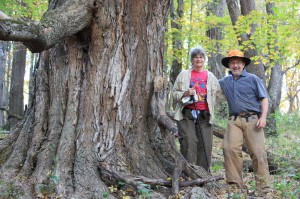Commentary by William Limpert, Roanoke Times, April 8, 2020
I want to thank Attorney General Herring for his recent amicus brief to the Supreme Court on behalf of Virginia citizens. He states “The (ACP) pipeline threatens Virginia’s natural resources with no clear benefits.” New evidence bolsters his argument, and indicates significant threats to the health and safety of Virginia residents near the ACP, and the MVP.
Several years ago we learned that the pipes for the ACP and MVP were coated with a fusion bonded epoxy to prevent corrosion, and explosions. We learned that the pipes were exposed to sunlight at large storage yards. We learned that the coating degrades and becomes thinner when exposed to sunlight.
Then we saw four catastrophic pipeline explosions in nearby states.
The pipes for the ACP have now been exposed to the sun for over three years. Inspection reports indicate that most of the ACP pipes showed degrading coating in 2017. PHMSA will not tell us the current coating condition without a FOIA request. We will file that request.
Similar sunlight exposure has occurred with the MVP pipes.
We further learned that the pipe coating contains carcinogenic, mutagenic, and toxic substances that could leach out into our groundwater. Manufacturer 3M admitted that coating degradation products are expected to be toxic to aquatic life.
Persons living downwind from the storage yards may also be inhaling wind-borne degraded pipe coating, which may contain Silica, a carcinogen by inhalation.
We learned here is even more to be concerned about. We learned that gas transmission lines leak. The Pipeline and Hazardous Materials Safety Administration (PHMSA) allows what they term non-hazardous leaks to continue leaking, and they tell us they don’t know how much is leaking.
Recent studies by the Environmental Defense Fund, and EPA found that, on average, 0.315% of transmission pipeline volume is lost to leaks. Given the large volume of gas transmitted, this is a large volume of pipeline leakage.
The ACP is approved to transport 1.5 billion cubic feet of gas per day. At that volume, a leak rate of 0.315% would discharge an astonishing 4,750,000 cubic feet of leakage per day, or 1.5 cubic feet of leakage per day for every foot of pipeline. Similar leakage rates would be expected from the MVP.
These leaks are probably not uniformly spaced along the pipeline. But on average, if you have 1,000 feet of the ACP going through your property, you may have 1,500 cubic feet of leakage into your ground every day.
What would leak? The biggest constituent in the pipes is methane, but natural gas streams can include ethane, propane, Iso-butane, pentane, heptane, octane, hydrogen sulfide, and aromatic chemicals, including benzene, toluene, and naphthaline.
What are the health and environmental impacts of these chemicals? These chemicals also include carcinogens, mutagens, and toxins. Benzene damages bone marrow, and the central nervous system, is linked to leukemia, and is listed as an environmental contaminant. Butane is described as immediately dangerous to health and life. Hydrogen sulfide is described as very toxic by inhalation. Naphthaline is listed as a carcinogenic agent that can cause retinal hemorrhage. Octane is described as very toxic to aquatic life, with long lasting effects as an acute hazard. Hexane can cause testicular atrophy.
Perhaps the least worrisome of these is methane, an asphyxiant that can cause death, is extremely flammable, and is a potent greenhouse gas.
Are there other undisclosed threats that lie ahead for Virginia citizens, and communities in the crosshairs of the ACP and MVP? There are.
The gas transported in the ACP and the MVP would be obtained from fracking Marcellus shale, which contains naturally occurring radioactive materials. Fracking extracts and concentrates the radioactive materials far underground, where they are safe, and brings them to the surface, where they are dangerous. These radioactive materials, including radon, enter natural gas pipelines. They would likely be discharged into our ground through the pipe leaks, and could seep into our homes.
The US EPA advises that radon causes 26,000 lung cancer deaths each year in our country. EPA also advises that many homes in Virginia already have dangerous radon levels, and require remedial action. We don’t need more radon from the ACP and MVP.
All areas near the pipelines are at risk from these multiple pollutants, but karst areas, where pollutants can travel quickly to homes and private drinking water sources, would be especially vulnerable.
Other Virginia regulators should follow Attorney General Herring’s lead, and act to stop these dangerous projects with no clear benefits.

